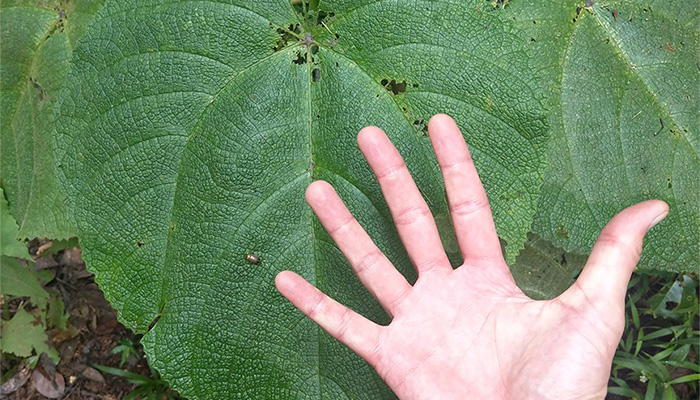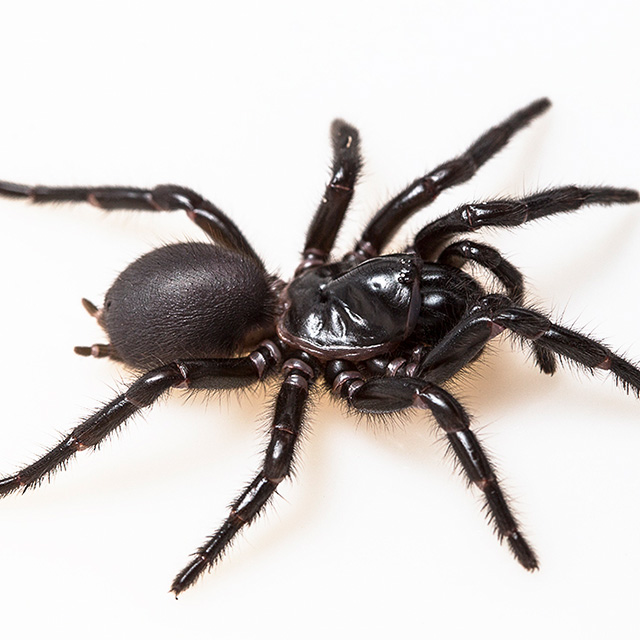It’s only human to feel fear and fascination for things that can kill or hurt us.
Our innate fear of toxic fauna and flora is a universal behaviour that has enabled us to survive, thrive and coexist with the natural world for millennia.
It allows us to recognise the threat of danger, pain or harm and act accordingly.
IMB researchers Dr Samuel Robinson and Dr Natalie Saez, from Professor Glenn King's lab, have faced that fear and transformed it into something positive.
Dr Robinson and Dr Saez work with some of the world’s most venomous plants and animals to gain insights into the prospective uses of their toxins.
While most recoil from venomous creatures, they seek to understand the creativity and complex chemical makeup of these natural weapons and defence mechanisms to develop new pain treatments and lifesaving cures.
A new sensation

Dr Samuel Robinson literally puts his body on the line in his quest to better understand pain. He has been stung more than 350 times by a variety of ants, wasps and other stinging insects and plants, which he rates according to pain level in an Excel spreadsheet.
That stinging, burning, painful feeling is not a new sensation for the researcher who, as a student in New Zealand, worked for a beekeeper and was occasionally stung up to 30 times a day.
Studying Honours in Pharmacology at Auckland University and a stint in a neuroscience lab piqued his interest in the effect of toxins on neuronal pathways and pain physiology.
“I was quite familiar with getting stung and was interested in how toxins can be used as tools,” Dr Robinson said.
“I want to understand pain signalling in the brain at a molecular level and venoms that target nerves are a huge untapped source of pain-causing toxins.”
Hitting a nerve
His Sting Science Program catalogues different types of stings, expanding on the pioneering work of his colleague and friend, the late US entomologist Dr Justin O. Schmidt, who created the Schmidt Pain Index.
Dr Robinson shares his firsthand sting experiences via social media @stingscience from the benign to extremely painful, such as the Queensland Gympie Gympie or giant stinging tree.
“After being stung, you realise there is something special in this plant. As a team, we found a new type of toxin unique to plants that had never been seen before and it interacts with pain-sensing nerves in the human body in a new way,” Dr Robinson said.
“It’s a perfect example of what we can learn from stings. We identified a new component of pain signalling with the potential to be targeted by completely new classes of painkillers.”

Science with bite

While Dr Natalie Saez does not seek to engage in painful firsthand interactions with her venomous research subjects, she has grown fond of the endemic arachnids she studies, becoming familiar with the creatures while milking their venom to enable new scientific discoveries
After 14 years of academic research into venoms produced by tarantulas and funnel-web spiders, she has put her fear to practical use, analysing the potent compounds for cures.
“People are scared of spiders and they can potentially be deadly but you can also harness the attributes of individual components in venom to be medically useful,” she said.
“That dichotomy was interesting to me and I wanted to explore the potential for the therapeutic implications of these toxins.”
Dr Saez investigated a bioactive peptide found in K’gari (Fraser Island) funnel-web spider venom that inhibits the activity of an ion channel in the human body that causes cell death by lack of oxygen.
This led to a translational research and development project with Brisbane-based startup Infensa Bioscience into a new cardiac disease drug to prevent damage caused by heart attacks and strokes.
Spidey senses are tingling
Dr Saez said her research only scratches the surface of the potentially lifesaving molecules that could be harnessed from more than 40,000 species of venomous spiders globally.
“I find spiders fascinating and their peptides are very specific and selective, making perfect tools for discovery,” Dr Saez said.
“We believe the K’gari (Fraser Island) funnel-web spider has around 3,000 peptides in its venom and only 10 or so are lethal. We’ve only looked into one of those non-lethal peptides, which became the therapeutic drug candidate.
“From one spider, there is a physical library of potent compounds that may have therapeutic applications.
“If we can isolate those individual components, we could find something that could provide a very potent and selective hit as a therapeutic, and that is where the real excitement lies.”

K’gari (Fraser Island) funnel-web spider venom contains a molecule which has become a drug candidate for heart attacks and stroke



